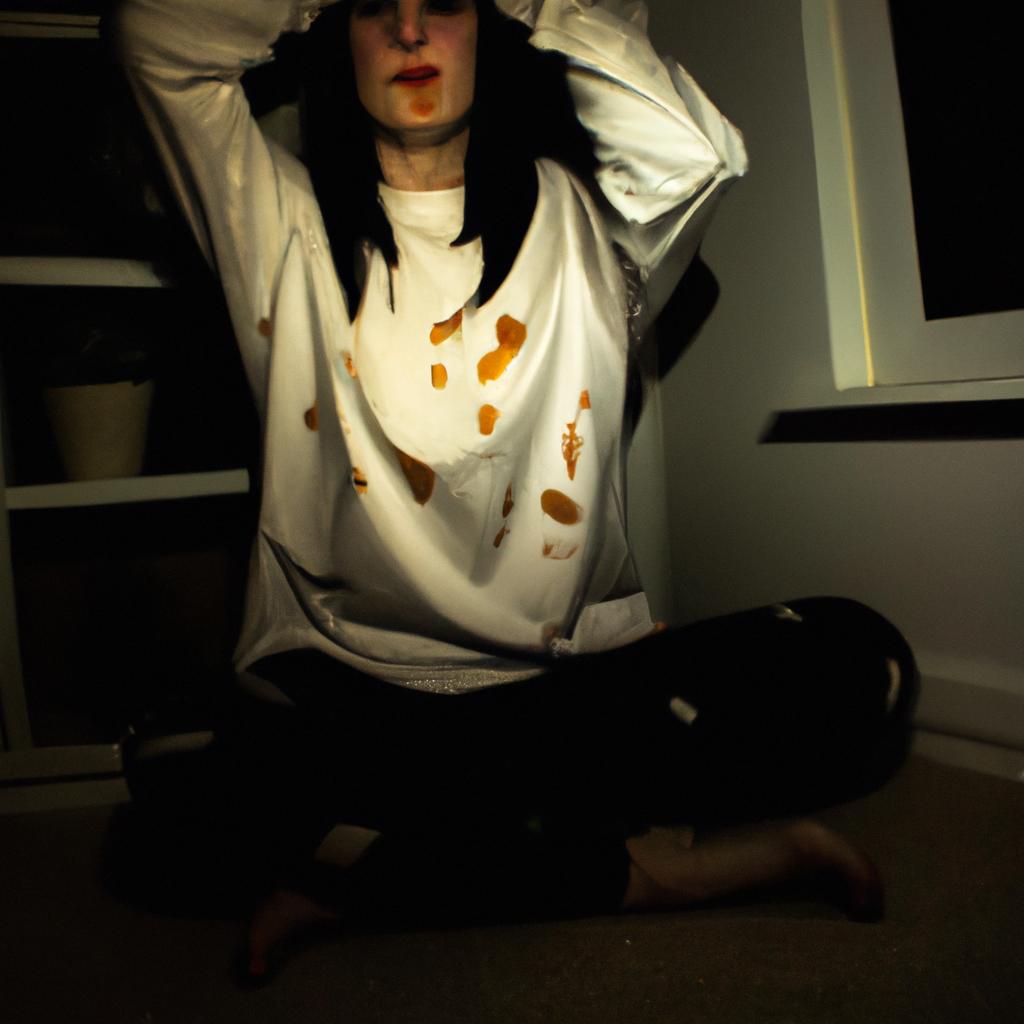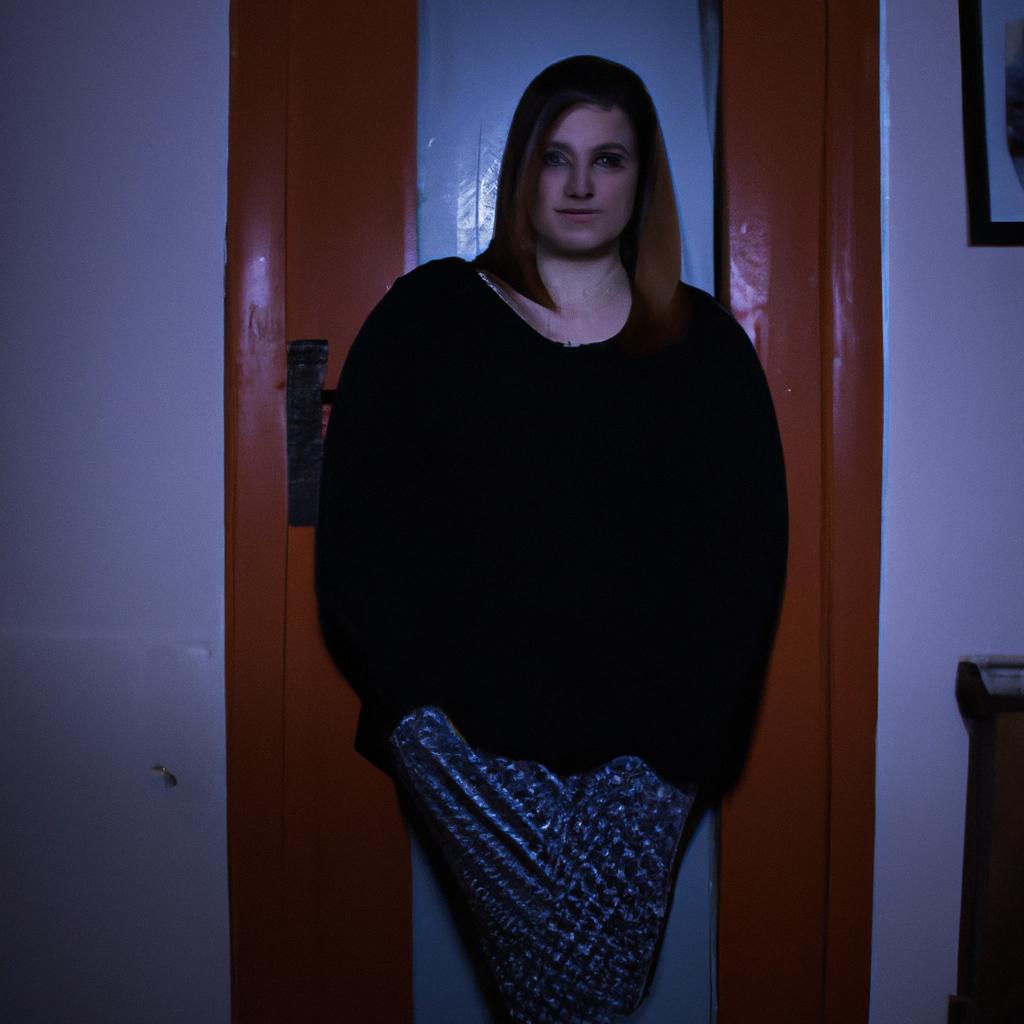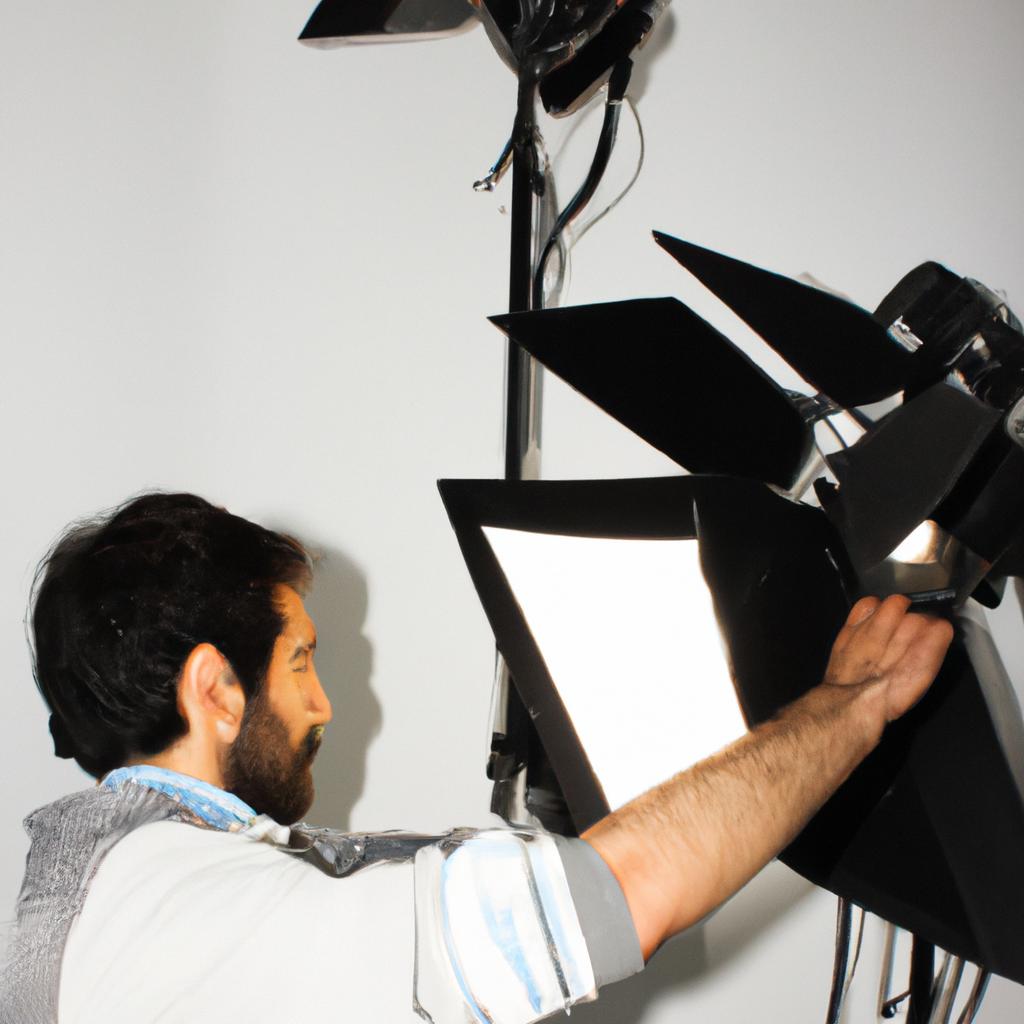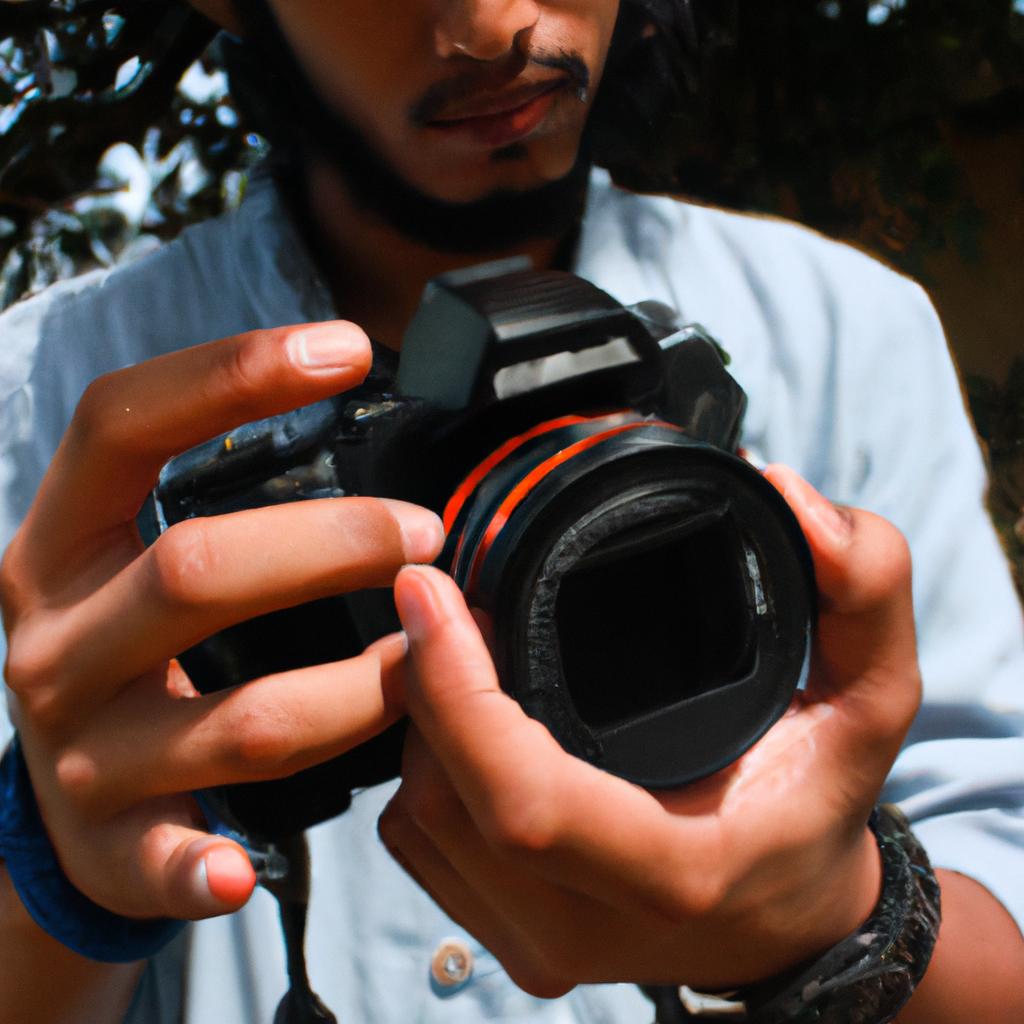Photography is a versatile medium that allows artists to capture moments and express their creativity through the manipulation of light. Boudoir photography, in particular, focuses on capturing intimate and sensual images of individuals in a private setting. One crucial aspect that photographers must consider when shooting boudoir photographs is lighting techniques. The choice between indoor and outdoor shooting can significantly impact the overall mood and quality of the images produced.
To illustrate this point, let us consider the case of photographer X, who specializes in boudoir photography. In one instance, Photographer X decided to shoot an indoor boudoir session with soft natural lighting streaming through a large window curtain. By strategically placing her subject near the window, she was able to create a romantic atmosphere with gentle shadows caressing the model’s curves. The resulting images exuded intimacy and elegance due to the controlled environment indoors offered by manipulating artificial lights along with natural light sources.
When comparing indoor and outdoor shooting for boudoir photography, various factors come into play regarding lighting techniques. This article aims to explore these differences comprehensively by examining how each approach affects key elements such as ambiance, control over lighting conditions, creative possibilities, and technical considerations. Understanding these distinctions will enable photographers specializing in boudoir photography to make informed decisions and effectively communicate their vision to clients.
The Importance of Location
When it comes to boudoir photography, the choice of location plays a crucial role in capturing the desired mood and aesthetic. Whether shooting indoors or outdoors, photographers need to consider various factors that can significantly impact the final result. To illustrate this point, let’s imagine a scenario where two different shoots take place: one in an opulent hotel suite and another in a lush garden.
Indoors, specifically in an elegant hotel suite, photographers have control over the environment’s lighting conditions. This allows for precise manipulation of artificial light sources such as strobes, softboxes, and reflectors. By strategically placing these tools around the room, photographers can sculpt shadows and highlights to accentuate their subject’s features. Additionally, they can experiment with different types of curtains or blinds to create interesting patterns of natural light filtering through windows.
On the other hand, outdoor locations provide a unique set of challenges and opportunities for boudoir photography. The abundance of natural light gives images a fresh and airy feel while also presenting potential difficulties in terms of harsh sunlight or unpredictable weather conditions. However, shooting outdoors offers diverse backdrops like blooming gardens or picturesque landscapes that add depth and visual interest to the photographs.
To evoke an emotional response from viewers, here are four key considerations when selecting a location for boudoir photography:
- Privacy: Ensuring your client feels comfortable is paramount in intimate photography sessions.
- Atmosphere: Choose settings that align with your client’s personality and desired tone for their images.
- Accessibility: Assess how easily you can transport equipment to ensure a smooth workflow during shoots.
- Lighting Control: Consider whether you prefer working with artificial light setups or harnessing natural daylight.
In addition to these points, below is a table highlighting some advantages and disadvantages associated with indoor versus outdoor shooting:
| Indoor Shooting | Outdoor Shooting |
|---|---|
| Controlled lighting | Natural light variations |
| Privacy and comfort | Potential weather challenges |
| Versatile backdrops | Limited control over lighting |
| Consistent shooting conditions | Unique outdoor aesthetics |
With the importance of location established, the subsequent section will delve into the specific techniques for utilizing natural light effectively in boudoir photography. By understanding how to harness and manipulate this primary light source, photographers can create stunning images that evoke a sense of intimacy and elegance.
Utilizing Natural Light
Transitioning from the importance of location in boudoir photography, it is crucial to consider lighting techniques when shooting indoors and outdoors. Lighting plays a significant role in setting the mood, highlighting certain features, and capturing the desired aesthetic. In this section, we will explore various lighting techniques used in indoor boudoir photography.
To showcase the impact of lighting on indoor boudoir photography, let’s imagine a scenario where a photographer is capturing intimate moments in a luxurious bedroom setting. By strategically positioning lights and utilizing light modifiers such as softboxes or diffusers, the photographer can create a soft and flattering glow that enhances the subject’s natural beauty while maintaining an intimate ambiance.
When working with indoor lighting for boudoir photography, here are some key points to keep in mind:
- Use multiple light sources: Incorporating different light sources allows for more control over shadows and highlights. For instance, using a combination of window light and artificial light can help balance out harsh shadows created by direct sunlight.
- Experiment with angles: Varying the angle at which light hits your subject can dramatically alter the overall look of an image. Play around with sidelighting, backlighting, or even top-down lighting to achieve unique effects.
- Consider color temperature: Different light sources emit varying color temperatures. Being mindful of these variations ensures accurate skin tones and consistent results. It may be necessary to adjust white balance settings or use color correction gels when blending natural and artificial lighting.
| Pros | Cons |
|---|---|
| Softens imperfections | Requires technical knowledge |
| Enhances intimacy | Limited availability of natural light indoors |
| Allows creative control | May require additional equipment |
Overall, understanding how to manipulate lighting effectively is essential when shooting indoors for boudoir photography. With careful consideration of multiple light sources, angles, and color temperature adjustments; photographers can create captivating images that capture both sensuality and intimacy.
Transitioning into the next section about controlling artificial light, let’s now explore how photographers can utilize artificial lighting techniques to achieve desired results in boudoir photography.
Controlling Artificial Light
Section H2: Controlling Artificial Light
Transitioning from the utilization of natural light, photographers often find themselves needing to control and manipulate artificial lighting in order to achieve their desired aesthetic in boudoir photography. By understanding how different lighting techniques can contribute to the mood and atmosphere of indoor shoots, photographers can effectively create stunning images that evoke a sense of intimacy and sensuality.
To illustrate this point, consider a hypothetical scenario where a photographer is conducting an indoor boudoir shoot with limited access to natural light. In such cases, relying solely on ambient or existing artificial light may not provide sufficient illumination or create the desired effect. Thus, controlling artificial light becomes crucial for achieving the intended look and feel of the photographs.
There are several key techniques that photographers employ when working with artificial lighting in boudoir photography:
- Directional Lighting: Placing a single light source at specific angles creates shadows and highlights that accentuate the subject’s features while adding depth and dimension to the image.
- Softbox Diffusion: Using softboxes helps produce diffused and even lighting by reducing harsh shadows and creating softer transitions between light and dark areas.
- Gels: Adding colored gels over artificial lights allows photographers to introduce creative effects, alter color tones, or match the overall ambiance of the scene.
- Reflectors: These tools bounce off existing light sources to fill in shadows, enhance details, or add an overall glow to the subject.
By employing these techniques strategically, photographers can shape the narrative within each photograph, capturing moments that exude elegance, allure, or vulnerability. The following table showcases examples of different moods created through various artificial lighting setups:
| Mood | Technique | Example |
|---|---|---|
| Romantic | Dimmed warm lights | Softly lit room adorned with candles |
| Edgy | Dramatic backlights | Silhouette against a dark backdrop |
| Playful | Colored gels | Vibrant hues illuminating the subject’s silhouette |
| Intimate | Softbox diffusion | Gentle light cascading over delicate features |
By skillfully controlling artificial lighting, photographers can transform a simple indoor setting into an intimate and captivating space.
Building upon the foundation of controlled lighting, another essential aspect to consider when creating compelling boudoir photographs is the use of props.
Creating Ambiance with Props
Controlling artificial light is essential in boudoir photography to achieve the desired mood and highlight the subject’s features. By manipulating indoor lighting techniques, photographers can create stunning and intimate images that capture the essence of their subjects.
For instance, imagine a scenario where a photographer is working with a client who prefers a soft and romantic ambiance for her boudoir shoot. To accomplish this, the photographer may choose to use diffused lighting techniques such as placing sheer curtains over windows or using softboxes to scatter light evenly across the room. This approach helps minimize harsh shadows and creates a flattering glow on the subject’s skin, enhancing her natural beauty.
To further enhance the emotional impact of boudoir photographs, consider incorporating these elements into your lighting setup:
- Dimmable lights: Adjusting the intensity of the lights allows you to control both brightness and contrast within an image. Gradually reducing illumination levels can evoke feelings of intimacy and sensuality.
- Colored gels: Experimenting with colored gels adds depth and emotion to your shots. For example, warm tones like red or orange can convey passion, while cool blues or greens can create a serene atmosphere.
- Directional lighting: Playing with different angles of light can help accentuate certain body contours or emphasize specific details. Shadows cast by directional lighting add drama and intrigue to an image.
- Candlelight effects: Simulating candlelight through carefully positioned strobes or LED lights can bring about a cozy and intimate feel, perfect for capturing those quiet moments between poses.
Incorporating these techniques into your boudoir photography sessions will allow you to craft visually compelling images that evoke powerful emotions from viewers.
| Technique | Effect | Example Usage |
|---|---|---|
| Diffused Lighting | Softens shadows | Enhancing skin tone |
| Dimmable Lights | Creates ambience | Setting a romantic mood |
| Colored Gels | Adds emotional depth | Conveying passion or serenity |
| Directional Lighting | Highlights specific features | Emphasizing body contours |
As you continue to explore the world of boudoir photography, understanding and mastering these lighting techniques will enable you to create captivating images that beautifully capture your subject’s unique allure.
Transition into the next section: In addition to controlling artificial light in boudoir photography, enhancing shadows and highlights is another crucial aspect that can significantly elevate your images. By skillfully manipulating these elements, photographers can add depth and dimension to their photographs, accentuating the sensual aspects of the subject’s form.
Enhancing Shadows and Highlights
In boudoir photography, props play a crucial role in setting the mood and creating an ambiance that enhances the overall aesthetic of the image. By carefully selecting and positioning various props, photographers can transform a simple indoor or outdoor setting into a captivating scene.
Let’s consider a hypothetical scenario where a photographer is shooting indoors, aiming to capture an intimate and sensual atmosphere. In this case, the use of soft lighting techniques combined with appropriate props can help achieve the desired effect. For example, placing strategically positioned candles around the room can create warm and romantic illumination while adding depth to the composition. The flickering candlelight not only provides soft highlights but also casts intriguing shadows on the subject, enhancing their allure.
To further enhance visual interest and variety in boudoir photography, photographers often utilize different types of props depending on the desired theme or style. Here are some examples:
- Luxurious fabrics: Draping silk sheets or delicate lace over furniture or across parts of the body adds texture and sensuality to the shot.
- Floral elements: Incorporating fresh flowers or petals into compositions can evoke feelings of romance and femininity.
- Vintage accessories: Antique mirrors, ornate picture frames, or retro pieces like old-fashioned telephones can contribute to a nostalgic atmosphere.
- Everyday objects: Utilizing everyday items such as books, coffee cups, or sunglasses introduces relatable elements that bring authenticity to the narrative.
By utilizing these prop options thoughtfully and creatively, photographers have endless opportunities for experimentation and storytelling within their images.
| Prop Type | Description |
|---|---|
| Luxurious fabrics | Draping silk sheets or delicate lace over furniture or across parts of the body adds texture and sensuality to shots. |
| Floral elements | Fresh flowers or petals incorporated into compositions evoke feelings of romance and femininity. |
| Vintage accessories | Antique mirrors, ornate picture frames, or retro pieces introduce nostalgia into images. |
| Everyday objects | Utilization of books, coffee cups, or sunglasses adds relatable elements that bring authenticity to the narrative. |
In this section, we have explored how props can create ambiance and enhance boudoir photography. However, it is important to remember that each prop should be used purposefully and in harmony with the overall concept of the shoot.
Post-Processing for Indoor and Outdoor Shots
Building upon the importance of enhancing shadows and highlights, we now delve into the realm of post-processing techniques for indoor and outdoor shots. By understanding these techniques, photographers can further enhance their boudoir images to create visually stunning results.
To illustrate the significance of post-processing, let us consider a hypothetical case study involving two boudoir photographs—one taken indoors and another outdoors. The indoor shot captures soft natural light streaming through sheer curtains, casting gentle shadows on the subject’s figure, while the outdoor image features golden hour sunlight filtering through lush foliage, creating a play of dynamic contrasts between light and shadow.
Post-Processing Techniques:
-
Color Grading:
Color grading plays an essential role in eliciting specific moods or emotions within a photograph. In our hypothetical case study, applying warm tones with slightly desaturated blues to the indoor shot could evoke an intimate ambiance. Conversely, accentuating vibrant greens and warm hues in the outdoor image would heighten feelings of sensuality against nature’s backdrop. -
Contrast Adjustment:
Manipulating contrast is crucial when it comes to bringing out details in both indoor and outdoor shots. For instance, increasing contrast in the indoor photograph can emphasize subtle textures like fabric folds or skin contours. On the other hand, reducing contrast in the outdoor image can soften harsh lighting conditions and produce a dreamy effect that enhances the overall romantic atmosphere. -
Noise Reduction:
Noise reduction is particularly vital when shooting at higher ISO levels or during low-light situations common with indoor photography. Applying noise reduction algorithms selectively helps retain fine details while minimizing unwanted digital noise artifacts—ensuring smoothness across skin tones or delicate fabrics present in boudoir imagery.
The following bullet point list aims to evoke an emotional response in the audience, emphasizing the transformative power of post-processing techniques:
- Elevate the ambience: Enhance images to convey warmth and intimacy indoors or a sense of ethereal beauty outdoors.
- Highlight subtle details: Bring out intricate textures and contours for a more visually captivating experience.
- Create dreamy atmospheres: Soften harsh lighting conditions for a romantic aesthetic that envelops viewers.
- Preserve image quality: Reduce noise artifacts while maintaining vital elements such as skin tones and fabric delicacy.
| Post-Processing Techniques | Indoor Shots | Outdoor Shots |
|---|---|---|
| Color Grading | Warm, intimate ambiance with desaturated blues | Vibrant greens, warm hues against natural backdrop |
| Contrast Adjustment | Emphasize fine textures like fabric folds or skin contours | Soften harsh lighting conditions for a dreamy effect |
| Noise Reduction | Smoothness across skin tones or delicate fabrics | Retain image clarity amidst low-light situations |
In summary:
By employing various post-processing techniques such as color grading, contrast adjustment, and noise reduction, photographers can amplify the impact of their boudoir photography. These methods allow for greater control over mood, detail enhancement, and atmospheric transformations both indoors and outdoors. Thus, mastering these tools enables photographers to showcase their artistic vision while crafting compelling narratives through their imagery.
 LW Larsen Photo
LW Larsen Photo



